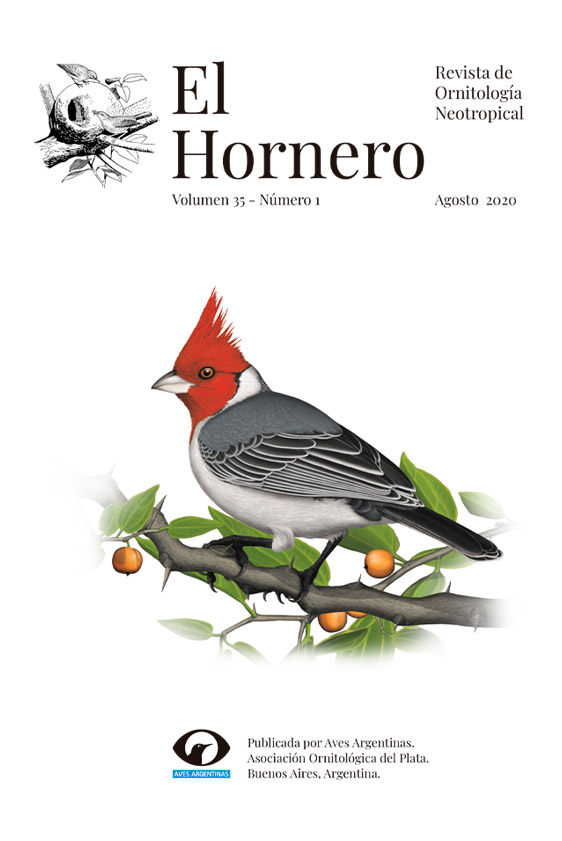Abstract
In spite of their relevance, the contribution of donated and confiscated materials to biological collections has been poorly quantified. The objective of this analysis was to evaluate the significance of donated and confiscated ornithological materials in the National Ultra-frozen Tissue Collection of the Museo Argentino de Ciencias Naturales “Bernardino Rivadavia”. Out of the 10 288 avian tissues deposited at the collection since its establishment in 2003, over one third correspond to donations (22% in total, 13% from individuals and 9% from Institutions) and confiscated specimens (12%). These tissues belong to 28 avian orders and represent over 50% of the deposited samples in 15 of them. Passeriformes, Anseriformes, and Procellariiformes are the most represented groups in donated and confiscated material, but there are other orders for which this source of samples is also the main contribution to the collection because they are not commonly captured in the field. Of the 871 species present in the collection, 156 (18%) are represented only by samples that come from donations and confiscated material. In fact, over half of the donated tissues and more than one quarter of the samples that come from confiscated specimens have been used in at least 46 different research projects. This analysis visualizes the importance that donated and confiscated specimens have for biological collections and highlights the need for joint work with private and public organizations, as well as the awareness of the society regarding the significance of donating biological materials to museums.
References
Bakker, F. T., Antonelli, A., Clarke, J. A., Cook, J. A., Edwards, S. V., Ericson, P. G. P., Faurby, S., Ferrand, N., Gelang, M., Gillespie, R. G., Irestedt, M., Lundin, K., Larsson, E., Matos-Maraví, P., Müller, J., Von Proschwitz, T., Roderick, G. K., Schliep, A., Wahlberg, N., Wiedenhoeft, J. & Källersjö, M. (2020). The Global Museum: natural history collections and the future of evolutionary science and public education. PeerJ, 8, e8225.
Clements, J. F., Schulenberg, T. S., Iliff, M. J., Billerman, S. M., Fredericks, T. A., Sullivan, B. L. & Wood, C. L. (2019). The eBird/Clements checklist of birds of the world: 2019. Disponible en: https://www.birds.cornell.edu/clementschecklist/download/.
Godoy, S. N. & Matushima, E. R. (2010). A survey of diseases in passeriform birds obtained from illegal wildlife trade in São Paulo city, Brazil. Journal of Avian Medicine and Surgery, 24, 199–209.
Hebert, P. D. N., Cywinska, A., Ball, S. L. & deWaard, J. R. (2003). Biological identifications through DNA barcodes. Proceedings of the Royal Society B, 270, 313–321.
Kongrit, C., Markviriya, D., Laithong, P. & Khudamrongsawat, J. (2020). Species identification and unlocking hidden genetic diversity of confiscated slow lorises (Nycticebus spp.) based on mitochondrial DNA markers. Folia Primatologica, 91, 1–14.

This work is licensed under a Creative Commons Attribution-NonCommercial 4.0 International License.





